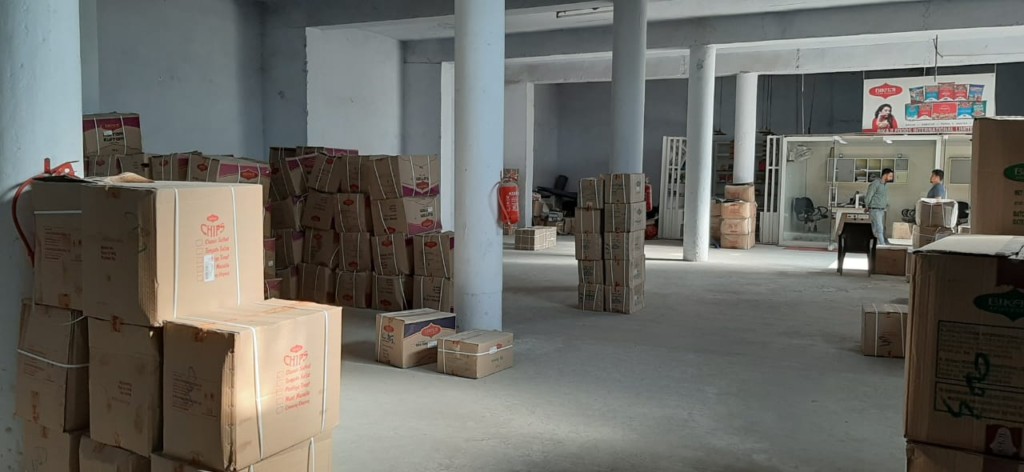When it comes to running a business, having a reliable and efficient warehouse is crucial. A warehouse is a vital component of many businesses as it allows for the storage of goods, materials, and equipment, and can be used for manufacturing, distribution, and logistics. However, renting a warehouse can be a significant expense for a business, and it’s important to understand the costs associated with renting a warehouse and how to save on those costs. This article will provide a detailed overview of the costs of renting a warehouse and strategies for saving on those costs.

Introduction
Warehouses are a vital component of many businesses, and the cost of renting a warehouse can have a significant impact on a business’s bottom line. The cost of warehouse on rent can vary depending on a variety of factors such as location, size, and amenities. It’s important to understand these costs and to develop strategies for saving on warehouse rental costs.
Location
One of the biggest factors that can impact the cost of renting a warehouse is location. Warehouses located in urban areas, near ports or airports, or in areas with high demand, will typically be more expensive to rent than warehouses in more rural or less developed areas. Additionally, warehouses located in states with higher taxes or higher costs of living will also be more expensive.
Size
The size of the warehouse is another factor that can impact the cost of renting a warehouse. Larger warehouses will generally be more expensive to rent than smaller warehouses. However, it’s important to consider that a larger warehouse may also be more efficient for your business, and can potentially save on costs in the long run.
Amenities
The amenities offered by a warehouse can also impact the cost of renting a warehouse. Warehouses that offer additional amenities such as climate control, security systems, or loading docks will generally be more expensive to rent than warehouses that do not offer these amenities.
Lease Terms
The terms of the lease agreement can also impact the cost of renting a warehouse. Longer leases can often result in lower monthly rental costs, whereas short-term leases may be more expensive. It’s important to consider the length of the lease that is most suitable for your business, and to negotiate the best possible terms with the landlord.
Ways to Save on Warehouse Rental Costs
There are several strategies that businesses can use to save on the costs of renting a warehouse. One strategy is to negotiate the terms of the lease agreement with the landlord. This could include negotiating a longer lease term, or requesting a reduction in rent in exchange for making improvements to the warehouse.
Another strategy is to explore alternative warehouse options. This could include renting a shared warehouse or a warehouse in a less developed area. Additionally, businesses can save on warehouse rental costs by using space more efficiently and reducing the amount of space they need to rent.
It’s also important to consider the potential long-term savings that can come from investing in a warehouse that is more efficient and better suited to the needs of the business. This could include investing in warehouse automation, energy-efficient lighting, or other cost-saving measures.
Conclusion
In conclusion, the cost of renting a warehouse can have a significant impact on a business’s bottom line. It’s important to understand the costs associated with renting a warehouse and to develop strategies for saving on those costs. Location, size, amenities, and lease terms are some of the biggest factors that can impact the cost of renting a warehouse. However, businesses can save on warehouse rental costs by negotiating the terms of the lease agreement, exploring alternative warehouse options, and making investments in efficiency and cost-saving measures. By understanding the costs of renting a warehouse, and taking steps to save on those costs, businesses can ensure that they are able to operate effectively and efficiently, while also keeping costs under control.
It’s also important to note that the cost of renting a warehouse is not the only factor to consider when choosing a warehouse. Other important factors include the warehouse’s location, accessibility, and suitability for your business operations. It’s essential to carefully evaluate all of the options available and choose the warehouse that best meets the needs of your business.
The impact of the cost of renting a warehouse on the business can be significant. High warehouse rental costs can eat into a business’s profits and make it difficult for a business to remain competitive. By understanding the costs associated with renting a warehouse and implementing strategies to save on those costs, businesses can ensure that they are able to operate effectively and efficiently, while also keeping costs under control. This can help a business to remain competitive, grow and succeed in the long term.
In short, the cost of renting a warehouse is an important factor for businesses to consider. By understanding the costs associated with renting a warehouse and implementing strategies to save on those costs, businesses can ensure that they are able to operate effectively and efficiently, while also keeping costs under control. This can help a business to remain competitive, grow and succeed in the long term.
